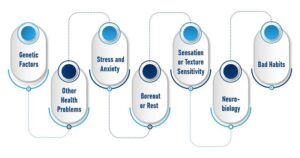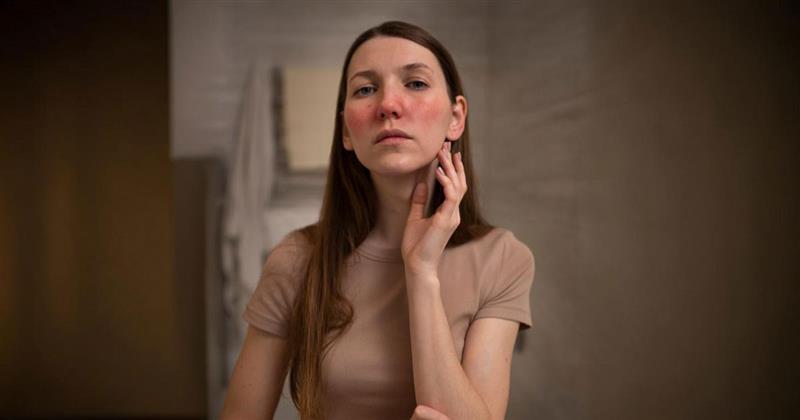Managing skin picking disorder entails monitoring and altering one’s habitual conduct. Triggers such as stress and boredom can be managed using a fidget toy or a stress ball. Therefore, keeping nails short is another helpful tip that reduces picking. Moisturizing can also serve as a distraction. You may use bandages and gloves on these triggers to block rather than satisfy the urge.
Similarly, meditative practices like mindfulness, deep breathing, and meditation are effective for managing anxiety. Create a regimen that facilitates tissue healing. In this guide, we’ll discuss the symptoms, causes, and ways to deal with this sort of disorder. Stay with us and get useful information by reading to the end.
What Is Skin Picking Disorder?
Dermatillomania or skin-picking disorder, occurs when someone has a strong desire to touch their skin, even if it harms them. Though difficult to manage, this usually begins with choosing things like dry skin, scuffs, or pimples. The individual could also get cuts, marks, or infections.
In addition, many times, sensations of stress, anxiety, boredom, and skin picking condition may also be a means of handling these feelings. It may cause public humiliation or shame, affect daily life, and sometimes depression or other mental health issues result. Hence, skin picking disorder treatment can address the emotional causes of the behavior and lessen the urge to pick. You may contact us at MAVA Behavioral Health, where you can get suggestions for mental health issues, whether through telehealth or in-clinic visits.
Signs of Skin Picking Disorder
The following are other associated behaviors of dermatillomania:
- Biting and pinching
- Picking at scabs or healing wounds
- Scratching or tapping the skin with tweezers, hairpins, or other objects.
- Frequently examining the entire body for possible areas of self-injury.
- Picking skin with fingers and biting nails.
What Causes Skin Picking?

The root causes of skin picking disorder, or dermaitllomania, are still being studied, but this condition includes a variety of sources:
1. Genetic Factors
Some studies indicate a connection during family tree research, suggesting that individuals who have members suffering from obsessive-compulsive disorder (OCD) or other similar syndromes may have a greater chance of developing this condition.
2. Other Health Problems
Skin picking often occurs simultaneously alongside other mental health issues like anxiety, depression, and even body dysmorphic disorder. The action could also serve as a means of coping with emotional pain or just any negative feelings one may be experiencing.
3. Stress and Anxiety
Numerous dermatillomania sufferers of signs that trigger skin picking to be stress, excessive nervousness, or any tension. Also, pushing one’s skin can be seen as a momentary release of focus from anxiety.
4. Boreout or Rest
Some people choose to cope with dullness or relaxation by skin picking. Such self-mutilation becomes soothing, and soothing traces of self-harm through repetition are performed.
5. Sensation or Texture Sensitivity
Some individuals show greater sensitivity than normal. For example, feeling an overwhelming urge to pick at bumps, scabs, or other imperfections may demonstrate a sensitivity to the skin’s surface.
6. Neurobiology
Some compulsive behaviors, such as skin picking, tend to occur in conjunction with some degree of neurotransmitter imbalance in one’s brain, such as a deficit of serotonin.
7. Bad Habits
Minor irritants or stress factors may trigger an episode of skin picking, but like most tendencies, it can be a habit over time.
Effects Of Skin Picking Disorder
1. Embarrassment and Shame
Individuals with skin-picking disorders normally are self-conscious about their marks, scars, or the damage they do to themselves by doing this. Therefore, they may shy away from social encounters because of what others might think. These make the mental part of the disease much worse. Which, in the long run, is to be less sociable and unable to socially relate.
2. Low Self-Esteem
Visibly raw skin from skin picking and damaged self-image may cause a person to have a negative view of themselves—low self-esteem. The marks on their skin will make people think that they are unattractive or imperfect, which can intimidate them and make them seem less confident, whether in a personal or professional sense.
3. Excessive Anxiety and Stress
Picking usually emanates from anxiety or stress. The picking provides relief for the act of picking, but it usually escalates to be a compulsive cycle for some. The more they pick, the more anxious and it makes it on an emotional level. In times of stress, the urge to pick may become stronger and thus cause more unhappiness. Adding more to a vicious cycle of spiraling emotional chaos that is difficult to break.
4. Guilt and Frustration
Skin picking disorder — Lots of people who suffer from this condition feel guilty over their habit, particularly when they injure themselves with picking. It can drive them crazy that they cannot suppress the urge to pick despite all of the negative effects. This guilt and frustration often result in a sense of helplessness. It is hard for them to quit the behavior; despite the fact they know they are destroying life with it. They can experience an increase in distress due to their inability not to obsess.
5. Social Isolation:
The picking disorder due to the way their skin looks or feeling of shame leads people with disfiguring picking to withdraw from social interaction. They may shy away from public places or not be able to wear specific clothing that makes the body parts bare. With time, this isolation may become loneliness and ultimately make depression worse with anxiety.
How To Heal Skin Picking Wounds Overnight?
Check out these tips to heal skin-picking wounds overnight:
- It fosters healing and reduces scabbing.
- You can also use petroleum jelly, Aquaphor, or aloe vera.
- Put a bandage over the sore to avoid touching it further.
- Relieves outbursts of redness, swelling, and inflammation.
- Its natural antibacterial properties may help with healing.
- Helps with skin healing.
- Sleeping well allows the skin to heal faster.
How To Stop Skin Picking?
Dermatillomania, commonly known as skin picking, can be controlled through self-monitoring and healthy coping mechanisms. Managing picks begins with recognizing stress, anxiety, or boredom as triggers and replacing them with other activities, such as squishing a stress ball or fidgeting with an object.
Additionally, mindfulness and some stress management techniques, such as meditation or even deep breathing, can help a lot. If self-intervention doesn’t help, then one should consider professional help through medication to deal with the root of the issue and develop better-coping mechanisms.
Skin Picking Disorder Treatment
1. Skin Picking Disorder Medication
Some skin picking disorder test might be helpful in accurately diagnosing such disorders before treatment.
- Antidepressants and anticonvulsants. Lamotrigine is a medicine that helps with uncontrollable movements. Studies indicate that it may be beneficial in some cases of dermatillomania.
- Antipsychotics adjust the balance of your brain’s chemistry, which helps in treating many ailments like dementia, bipolar disorder, schizophrenia, and more. Scientists are still pursuing other conditions that these drugs can help treat, such as dermatillomania.
- Nutraceuticals are products related to supplements that could affect nutrition. Research has found that N-acetylcysteine, an amino acid supplement, can reduce the urge to pick for patients with dermatillomania.
Important Note:
All the details provided in this article aim for informational and educational purposes. Please don’t consider it medical advice or a substitute for a psychiatric evaluation. For professional guidance and treatment, consult with our licensed healthcare professionals at MAVA Behavioral Health.
End Note
Medication to alleviate compulsive urges and anxiety related to picking at skin disorder(Excoriation Disorder) can be helpful in Skin picking disorder treatment. SSRIs (Selective serotonin reuptake inhibitors) such as fluoxetine or sertraline are the commonly used mood stabilizers to control mood swings and decontrol.
Moreover, a study of N-acetylcysteine (NAC) modulating glutamate levels shows its efficacy in reducing repetitive behaviors. In the case of severe symptoms, antipsychotic medications or mood stabilizers may be used. In addition, a psychiatric evaluation helps choose the right treatment plan. An individual is expected to seek adequate management with an integrated approach to skin picking. You may select MAVA Behavioral Health to get the right treatment for the issues you have been facing for so long.
FAQ’s
What is the fastest way to heal skin from picking?
Clean the area, apply an antibiotic ointment, and cover it with a band-aid. Do hydrating creams (filler: hyaluronic acid or ceramides). To keep from picking more and relishing wounds, avoid picking at me with long fingernails. Anxiety or OCD — skin-picking disorder.
Is skin-picking anxiety or OCD?
Skin picking (dermatillomania) is a type of body-focused repetitive behavior (BFRB). Usually associated with anxiety and stress, a mental illness that falls into Obsessive-Compulsive Disorder. MAVA Behavioral Health treatment may include meds and psychiatric evaluation.
What vitamin stops skin picking?
Compulsive behaviors: Vitamin B6 and inositol (a form of Vitamin B8) lower Confidence. Magnesium is believed to play a role in nervous system stabilization and hence relieves nervous-induced picking. It is important to consult a physician before taking any supplements for skin picking.
How to heal raw skin overnight?
Apply a burn ointment (Aquaphor or Vaseline) liberally before bed. Cover the area with a Hydrocolloid Bandage to help keep it clean and shorten recovery time. Dry the skin gently and avoid direct contact to prevent further irritation.
What is the pill for skin picking?
Selective serotonin reuptake inhibitors (SSRIs) fluoxetine — may help curb obsessive picking. N-acetylcysteine (NAC) – This is an over-the-counter aminic supplement that showed promising results.









